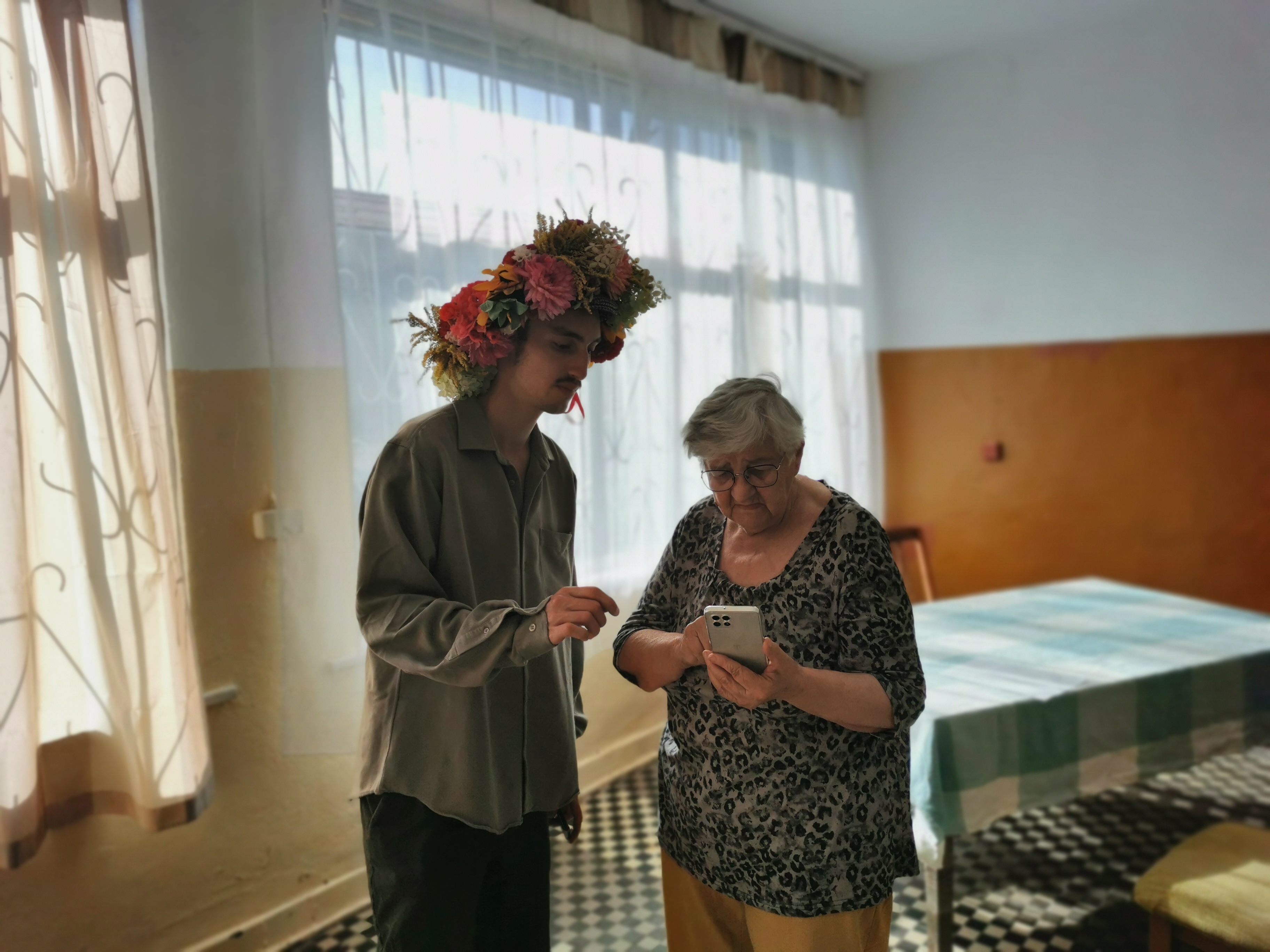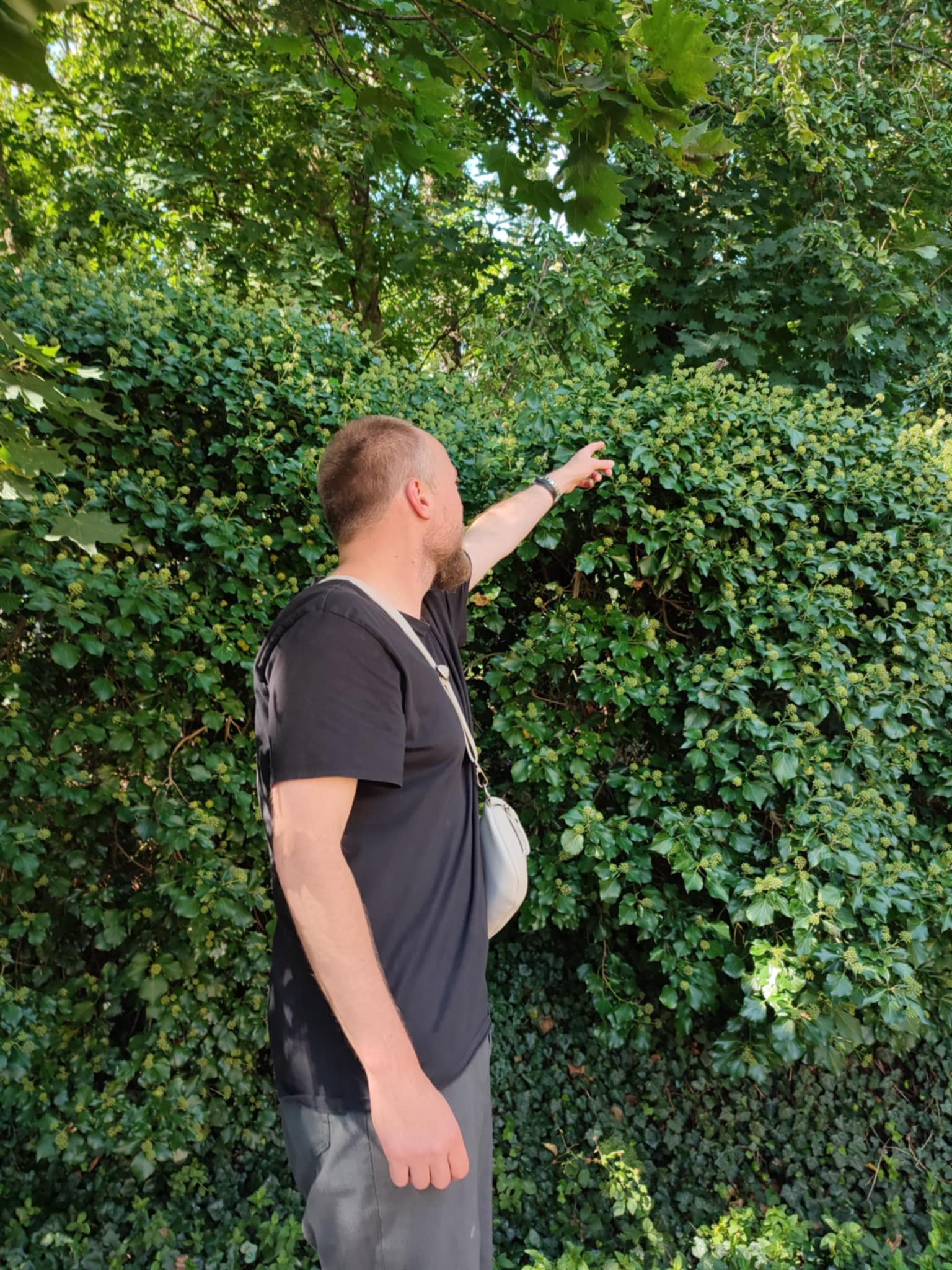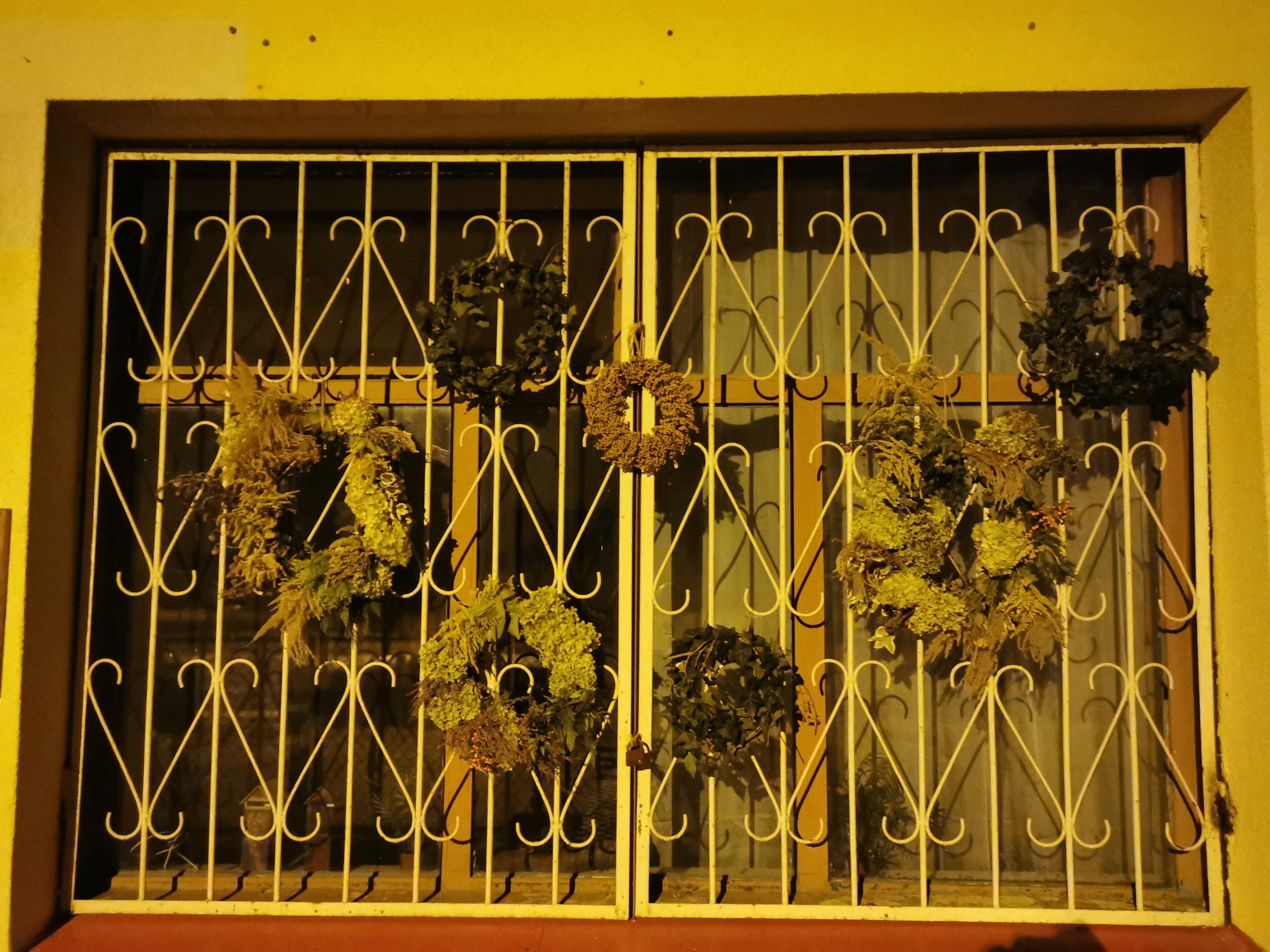The butterfly effect or the day of flowers I
2025-06-01
An article by Malik Meyer
The seeds for the Days of Flowers were already planted on the day when the Market Groseria opened for the first time. With our first guest in the store, Pani Stasia, meaning Mrs. Stasia. We have been sharing moments of exchange with her for several years, she lives in Stolec and now, on the first day, she was walking across the street towards the store. When I saw her, I wondered what she was holding in her hand - as she came closer, I realized more and more what it was
A crown? A crown of flowers? No, actually, a wreath of flowers.
A wreath of flowers that she made herself with flowers from her garden as a welcome gift for us, and we had no idea what such a gift might become. We stayed at the table with her and drank tea, thinking together about what else should or could happen over the next few days. So often, we listened to her anecdotes and shared a laugh with her. The exchange was cheerful, she talked about characters and stories she remembered and imagined, those that she thought could be inspiring for us.

Three days later. We're sitting at the table next to the store, on the stage of the liquid stone. We (Kolja, Luiza, Ola and I) exchange stories and experiences with Robert and Ron, an unexpected first encounter here at the store, to which I would like to dedicate a separate text fragment soon.
During our conversation Luiza notices the butterflies on the tree above us. Our attention is now turned upwards, our eyes directed at the bush above us, and we notice a couple of small movements. You can also hear bees buzzing among the butterflies and leaves like branches that move gently. And at the same time, as we observe these small happenings, I notice it once again: the fragile moment of dialog between individuals, between perspectives sitting at the same table, sharing similarities and differences. Sharing. Exposed to its only frame, bartering, at a meeting place where stories are exchanged with a coffee or tea.
So, while I listen to the conversations and follow the facial expressions, my attention goes back to the image of the butterfly.

I remember that there is this saying. It expresses metaphorically that even the flap of a butterfly's wings at one point on earth can influence the weather at another location.
That stays in my head. It forms another piece. The store forms its own little piece of earth with the fence's border. A small place. And it creates its own atmosphere. Dialogic flapping of wings that merge into each other and give each other opportunities for growth and exchange. These flapping wings rise and fall. Coming and going, and I imagine this ensemble as the scheme of this place - and the encounter in this place as our vehicle. Encounters that shape themselves in both a natural and cultural sense and again, by extension, result in the impulse of a flap of wings. How the place, the piece of earth on which we sit, heavy with memories, forms such potential and challenges us to look at these moments in between. And to give the diverse flapping of wings a context. To experience how they are activated and what they cause. The in-between is virtual.
My thoughts are happily interrupted by a visit from Pani Stasia, who now comes by almost every day. She sits with us. She joins us for tea and becomes part of the conversation. Inspired by Robert and Ron's conversation, we also talk with her about cars, and she shows us her favorite ones. And, parallel to the conversation, Kolja writes something on his cell phone, reaches it out to her and lets the audio voice speak for him in Polish. I hear the voice and can't understand fully. Mrs. Stasia has a smile on her face. The question he has asked the online translator about is whether she could show him how to make a flower crown - the kind of wreath she brought to us on the first day. She is impressed and answers the question with a clear smile. Before the conversation between Ms. Stasia, Kolja and the translator can continue, Luiza suggests that they organize a workshop the next day and invite more people. The joy in Ms. Stasia's eyes grows.
“Really?” she asks. “Of course,” we let her know. We explain to her that we would like to learn from her and that we see it as a good opportunity to create this space for exchange with her. And so, the workshop was scheduled for the next day at the planned time, Luiza had gathered a group of people, artists and people from the village next to the store. The procedure was an interplay of picking and tying. The flowers were tied into wreaths; the wreaths formed connections and then found their place on the window facade of the store.
Market Groseria was planned over a longer period, with the aim of creating space and time for interactions that grow out of actions and reactions. As a theater maker, I feel the need to explore and create spaces, and with Groseria I also wanted to try to translate these processes, which normally take place in the theater space, into the public space, into the meeting place of the store. Actions and reactions in the theater process should now be reflected in the Momentum. In which artists as well as people from the village and guests passing through should become hybrid protagonists, in action, reaction and interaction, forming the potential of theatrical and dialogical images that add value to the cultural process of the Market Groseria. Images that find their frame as soon as one reacts to them and give them the opportunity to develop various forms over a longer period of time. These moments, these forms interest me.
What happened next?
The effects that we were able to achieve through these encounters formed the basis for our bartering. In this way, a place could be created where actors and community, artists and spectators could interact and act together. In action. In this way, we build on nature (natural way) and found frameworks of culture (artistic way) and form bridges.

As already described, the flower wreaths were hung on the windows of the store after the workshop. Over the next few weeks, they were to form an act of the moment - a question, a need to ask and to learn. Over time, they will become increasingly dry and colorless. But their withering, like the store, also stands for construction and deconstruction. For fullness and emptiness. And for a constant moment of encounter and confrontation with the natural and cultural aspects of the place and the narrative of the store. The memory and the present.
And so, one moment leads to another. A question leads to a thought. From the observation of a butterfly and its flapping wings, which caused a gust that brought individuals together. From the garden to the village, to the store and into action. The gift of a wreath of flowers helped us stay inspired and curious. This series of moments formed the frame of the day that gave space for flowers. And it was not to be the last day on which flowers would provide an interaction in Stolec.
Now I continue to ask myself the question: Is the act of handing over the wreath already a theatrical moment? I think so. As we reinterpret the term for ourselves and place every meeting in the store, with the idea of space, under a fragile observation. It also led us into a dialog and allowed us to exchange ideas with the community. More to create a place of collective experience. And even the act of remembrance, the drying of a once colorful wreath, forms a quiet, slow theatrical act that further contextualizes the store.
Well, do we have time to observe it?
Picture 1 and 3: Kolja Kraft
Picture 2: Luiza Supernak
